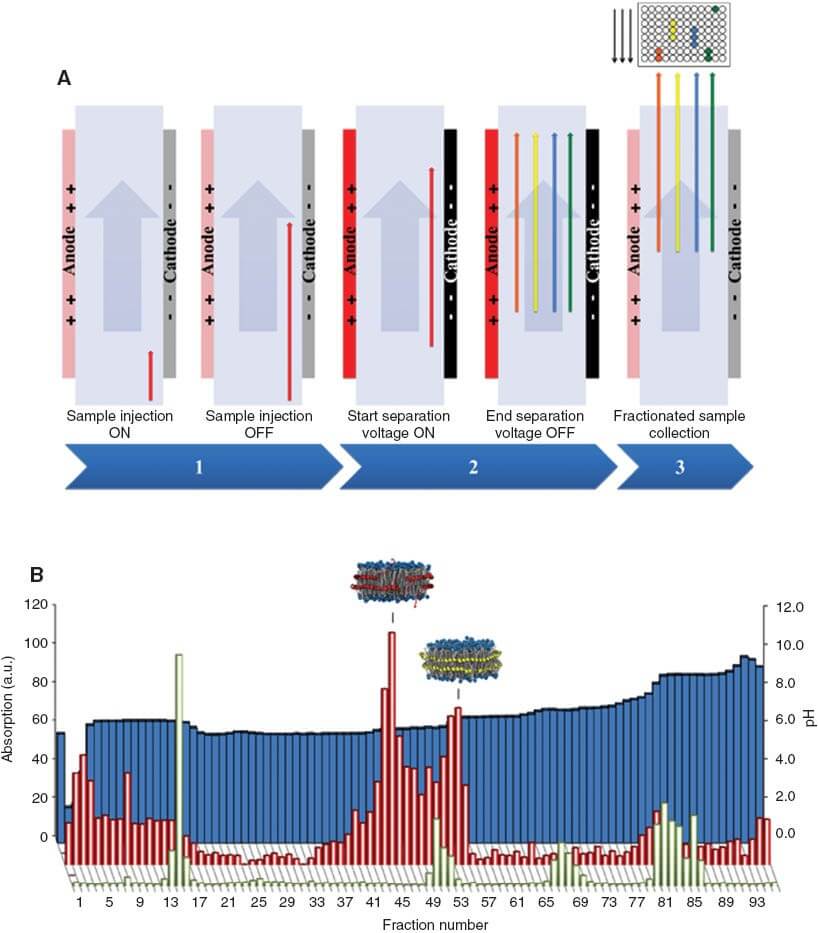Mempro™ Free Flow Electrophoresis (FFE)
With years of experience in nanodiscs technology study, Creative Biostructure provides customized Mempro™ nanodiscs analysis service using free flow electrophoresis (FFE) technique. As a lead in the nanodiscs technology manufacture, Creative Biostructure offers high quality FFE technique services to meet client’s requirements.
FFE is a technique projected to separate the analytes in view of their electrophoretic mobility, which is available on both a preliminary scale and an analytical scale. The separation is accomplished in aqueous media in the lake of a matrix, therefore decreasing the loss of the material on account of unspecific combination or denaturing effects, which conversely leads to the probability of gaining high yields ( > 80%). Hence, FFE can be used either as an individual purification of assembled nanodiscs or combined with downstream applications or analysis. The sample is flowed into a planar flow chamber when it is separated. In this process, an electric field is vertically added to the direction of streaming, making analytes deflected based on their electrophoretic mobility when they go through the flow channel.
 Figure 1. Free flow IZE for the separation of nanodiscs. (Justesen, B. H. 2014)
Figure 1. Free flow IZE for the separation of nanodiscs. (Justesen, B. H. 2014)
- Nanodiscs Analysis Using Free Flow Electrophoresis (FFE)
The common use of FFE related to the application of a successive buffer flow and electrical field. Nevertheless, this method has many effects, which lead to band broadening and a lower resolution of the FFE separation. Numerous advancements have been performed so as to solve these effects, such as the use of concentrating modes with isoelectric focusing or isotachophoresis, and handling with pH gradients or steps in the separation buffer. To separate nanodisc samples, an inconsecutive mode of FFE, called free flow interval zone electrophoresis (IZE), was arose lately. In this strategy, the electric field is utilized for a short period of time during the run, however, the sample application and the final elution of the separated analytes are completed with the electrical field. - Advantages of Free Flow Electrophoresis (FFE)
In contrast to the common approaches, such as affinity chromatography and SEC, the primary advantages of FFE-based nanodisc purification are the lack of matrix and short separation time, leading to a fast and tender treatment of the nanodisc samples. Which conversely minimizes the danger of sample denature. As FFE is in charge of migration of charged analytes in an electrical field, a successful separation is based upon the charge difference instead of the cases of separation of similar-sized nanodisc complexes.
Creative Biostructure provides other various Mempro™ nanodisc technology services, besides nanodiscs analysis. Please feel free to contact us for a detailed quote.
References:
Justesen, B. H. (2014). “Chromatographic and electrophoretic methods for nanodisc purification and analysis”. Reviews in Analytical Chemistry 33(3), 165-172.
Benz, C. (2015). “Chip‐Based Free‐Flow Electrophoresis with Integrated Nanospray Mass‐Spectrometry”. Angewandte Chemie International Edition 54(9), 2766-2770.